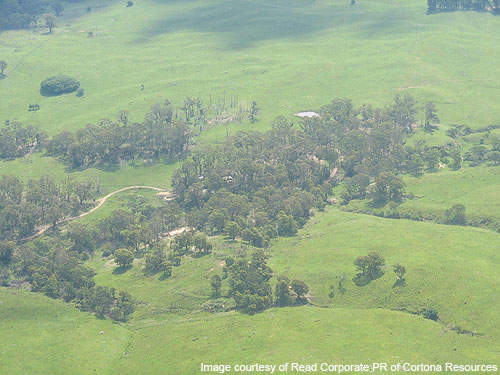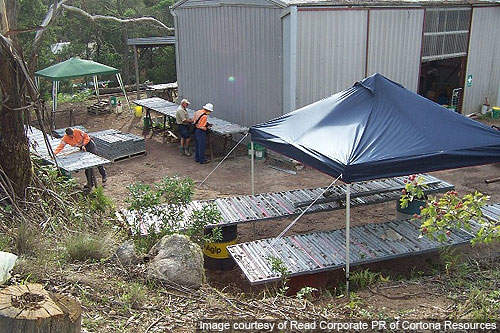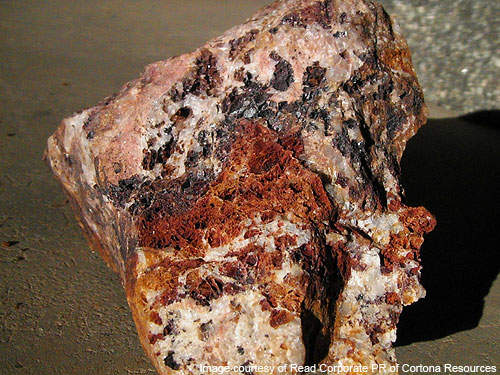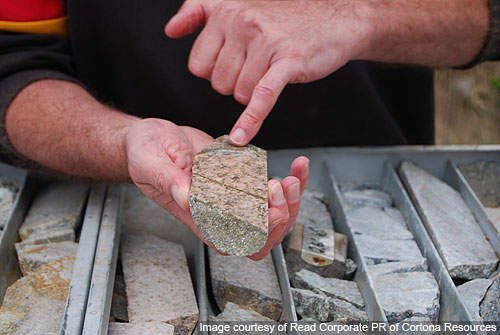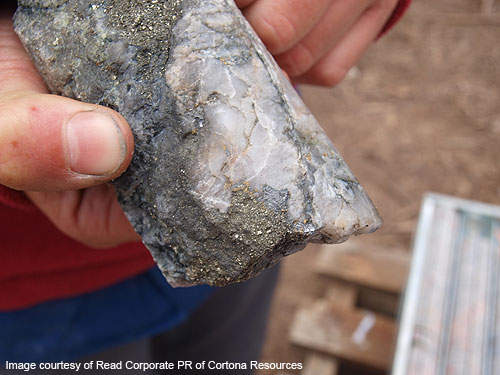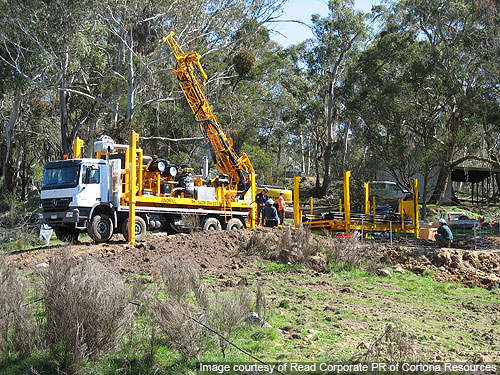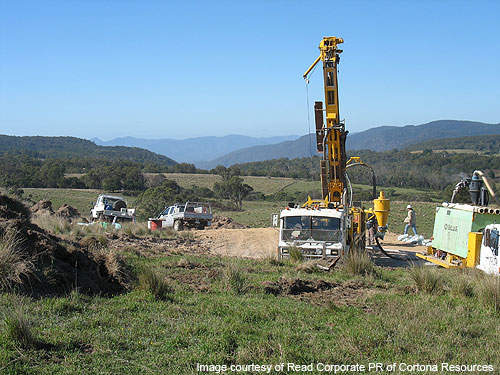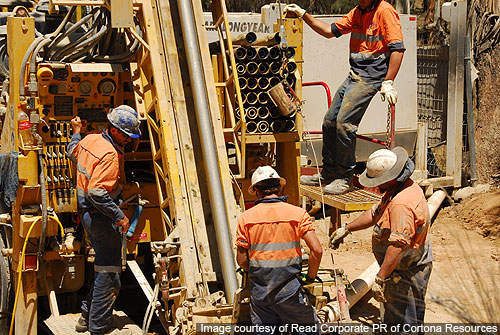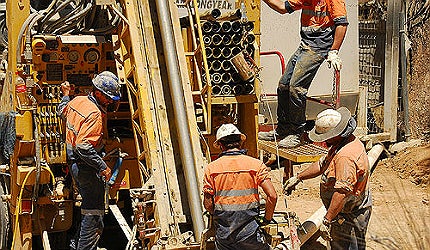
The Dargues Reef gold mine is located in New South Wales (NSW) in Australia, approximately 60km south-east of Canberra, directly north of the town of Majors Creek. The mine was owned by Cortona Resources, which merged with Unity Mining in January 2013.
Discovered in the 1870s, the deposit was mined over two periods, from between 1870 and 1891 and between 1914 and 1916. The deposit has historically achieved a minimum production of 2,000t at a grade of 14g/t Au.
On 14 April 2011, Cortona signed a memorandum of understanding (MoU) with GBF Mining and Industrial Services for mining of the deposit. The mine will produce an average of 50,000oz of gold per annum in the first six years of production. A feasibility study completed in November 2010 confirmed the viability of an underground mine.
Cortona Resources (now Unity Mining) completed pre-construction activities and signed agreements with key contractors to facilitate seamless production. DRA Pacific received a lump sum contract from Cortona Resources in August 2011 to build the 330,000tpa capacity processing facility at the Dargues Reef mine.
The NSW Planning Assessment Commission (PAC) and the Federal Government approved the project in September 2011. The NSW Environment Protection Authority issued an environmental protection licence to the project in June 2012. The project also received approvals for the final two Dargues Reef management plans and environmental management strategy.
Construction at the mine was scheduled to begin in the fourth quarter of 2012 with production expected to commence by early 2013, but delayed due to the merger. Production at the mine will begin at the rate of 330,000tpa.
Unity Mining started pre-construction earthworks at the mine in February 2013. Production is planned to begin in the first half of 2015. The project has however been on hold since November 2013 due to delay in completion of technical studies and funding.
As of June 2014, technical studies were underway while the feasibility study has been completed.
Financing Cortona Resources’ mine
In August 2011, Deutsche Bank was mandated by Cortona to provide a debt facility of A$37m ($38.1m) for the development of the Dargues Reef mine. Approximately 25 million shares at the price of $0.14 each share were placed by Cortona Resources in the same month to raise $3m funding for the mine’s development. In March 2012, Cortona secured A$42m ($42.22m) from Deutsche Bank for development of the mine.
The financing arrangements made with Deutsche Bank were, however, terminated following the merger. The CommonWealth Bank agreed to provide $45m for the project in October 2013.The mine holds 1.615Mt of gold graded at 6.3g/t Au.
Geology and mineralisation at the Australian gold mine
The deposit lies within the Lachlan fold belt, a composite organic belt that underwent four phases of folding, uplift and intense compression. It forms part of altered granitoid rocks of the Devonian aged Braidwood Granodiorite. The western and eastern contact of the granodiorite dips gently and steeply to the west and east respectively. Multiple east-south-east and south-east oriented faults and a second set of north-north-east trending structures intrude the Braidwood Granodiorite.
Gold mineralisation is hosted as several distinct lodes within areas of intense alteration of the Braidwood Granodiorite. The formation of the mineralisation is marked by two events. The first event relates to the deposition of euhedral and subhedral pyrite and the related early phase alteration. The second event is the concentration of irregular pyrite comprising several inclusions of gold, chalcopyrite, bismuth, sulfosalts and galena.
The lodes measure between five metres and 15m in width and strike up to 140m in length, with a downdip extension of up to 450m. The structurally controlled lodes dip steeply and trend east-west and east north-east to west south-west. The Big Blow lode is the thickest and most consistent segment of mineralisation. It extends 115m in strike, is open at depth and has a southerly dip of between 70 and 85 degrees. The lode intersects at approximately 700 to the east with the main lode.
The lodes follow the east west oriented fracture system in the granodiorite. The fracture system is well defined next to the diorite dykes. A north-south trending fault disrupts the dykes and mineralisation.
The lodes are associated with hydrothermal quartz-sericite-calcite-pyrite alteration assemblages. Up to 80m from the lodes, a large envelope of propylitic alteration is observed in outcrop at Dargues Reef. Alteration minerals include white mica, epidote, carbonate, illite, montmorillonite, chlorite and kaolinite.
Mining and processing at Dargues Reef
Mining at Dargues will be by underground sub-level open stope mining methods. Additional surface infrastructure will include box cut, portal, fuel store, magazines, ventilation rise and supply for power and water.
The stoped out zones will undergo a back fill-past fill process to facilitate maximum ore extraction. Backfill material will also include waste rock to reduce haulage to surface and the storage of surface tailings.
The processing plant will recover 50% of gold through a standard gravity process. It will comprise of a crusher, ball mills, gravity circuits and floatation cells.
A sulphide concentrate will be produced with the remaining gold. The plant will adopt a three-phase crushing and coarse grinding process. Cyanide will not be used, resulting in an environmentally friendly gold processing facility.
Cortona signed a license agreement with Westlime on 17 August 2011 to operate the Westlime-owned London Victoria gold processing plant in New South Wales for processing the Dargues Reef gold-silver-pyrite concentrate.
Exploration campaign at the New South Wales-based deposit
Two phases of reverse circulation (RC) drilling were successfully completed during 2009-2010, targeting the top zone of 150m to 200m.
In the first phase, 30 holes were drilled, reporting high-grade gold intersections. Phase two drilling involved a parent hole of which five to six daughter holes were wedged out. Positive drilling results expanded the known mineralised zone.
In order to complement the Dargues resource, drilling at near mine shallow resources was commenced. A 4,000m RC drilling programme at the Major Creeks commenced in September 2011 and principally focused on such resources, including the Chainman’s, Scarlet, Carmine and Thompsons prospects.
Transport and handling at Dargues Reef gold mine
Gold concentrate will be trucked to the processing plant at London Victoria gold mine, situated approximately 400km away from the Dargues Reef gold mine, to produce gold dore.

